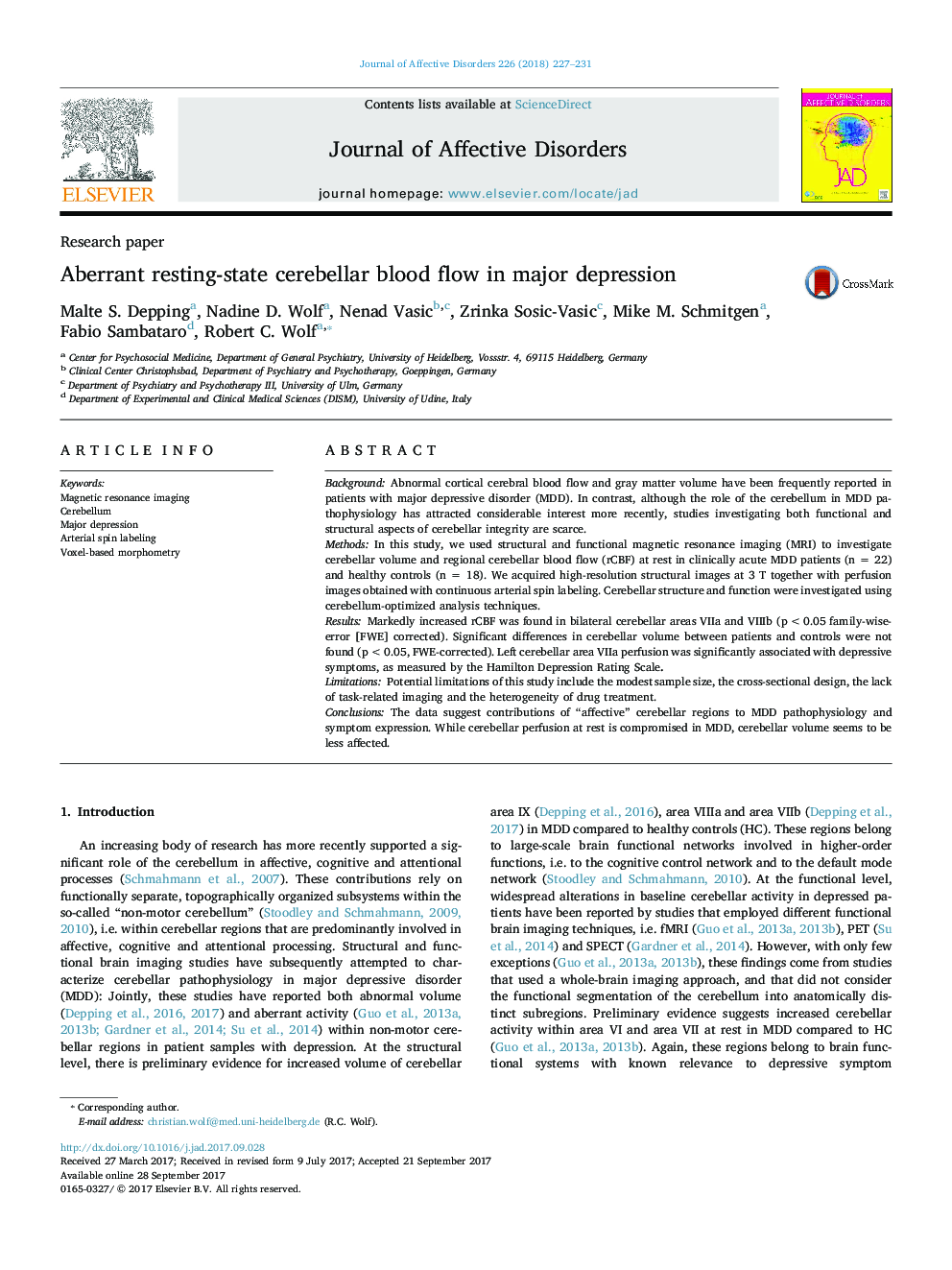| Article ID | Journal | Published Year | Pages | File Type |
|---|---|---|---|---|
| 5721657 | Journal of Affective Disorders | 2018 | 5 Pages |
â¢We investigate cerebellar morphology and function in MDD patients.â¢MDD is characterized by abnormal arterial perfusion of distinct cerebellar regions.â¢Aberrant cerebellar blood flow occurs independent from volumetric alterations.â¢Aberrant cerebellar blood flow is associated with clinical severity.
BackgroundAbnormal cortical cerebral blood flow and gray matter volume have been frequently reported in patients with major depressive disorder (MDD). In contrast, although the role of the cerebellum in MDD pathophysiology has attracted considerable interest more recently, studies investigating both functional and structural aspects of cerebellar integrity are scarce.MethodsIn this study, we used structural and functional magnetic resonance imaging (MRI) to investigate cerebellar volume and regional cerebellar blood flow (rCBF) at rest in clinically acute MDD patients (n = 22) and healthy controls (n = 18). We acquired high-resolution structural images at 3 T together with perfusion images obtained with continuous arterial spin labeling. Cerebellar structure and function were investigated using cerebellum-optimized analysis techniques.ResultsMarkedly increased rCBF was found in bilateral cerebellar areas VIIa and VIIIb (p < 0.05 family-wise-error [FWE] corrected). Significant differences in cerebellar volume between patients and controls were not found (p < 0.05, FWE-corrected). Left cerebellar area VIIa perfusion was significantly associated with depressive symptoms, as measured by the Hamilton Depression Rating Scale.LimitationsPotential limitations of this study include the modest sample size, the cross-sectional design, the lack of task-related imaging and the heterogeneity of drug treatment.ConclusionsThe data suggest contributions of “affective” cerebellar regions to MDD pathophysiology and symptom expression. While cerebellar perfusion at rest is compromised in MDD, cerebellar volume seems to be less affected.
